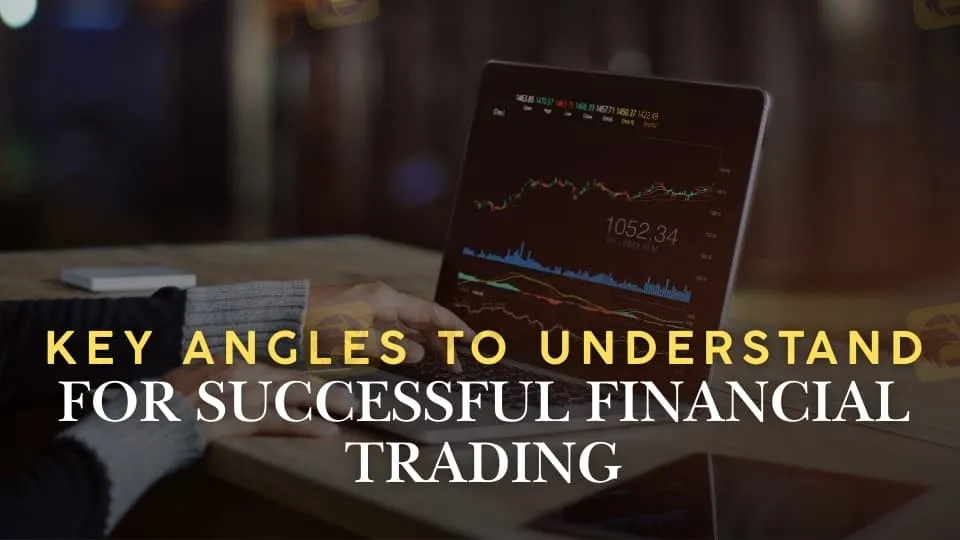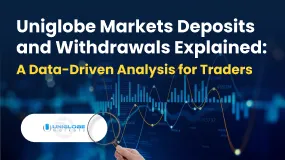简体中文
繁體中文
English
Pусский
日本語
ภาษาไทย
Tiếng Việt
Bahasa Indonesia
Español
हिन्दी
Filippiiniläinen
Français
Deutsch
Português
Türkçe
한국어
العربية
Key Angles to Understand for Successful Financial Trading
Abstract:Master essential financial trading angles like market sentiment, supply and demand, technical and fundamental analysis, and the 3-5-7 rule for consistent profits.

Trading in the financial markets is a highly dynamic and complex endeavor that requires more than just luck or intuition; it demands a deep understanding of various factors that drive market movements. Whether you are a beginner just starting out or an experienced trader with years of expertise, knowing these essential angles will help you make more informed decisions, minimize risks, and increase the likelihood of success.
Mastering the intricacies of financial trading means understanding market sentiment, analyzing supply and demand, and staying on top of economic indicators, among other crucial elements. These concepts are foundational to navigating the unpredictable waters of the financial world.
Understanding Market Sentiment
Market sentiment refers to the collective mood or attitude of traders and investors toward a particular market or asset. It's a psychological factor that can influence short-term market movements significantly. When the market is optimistic (bullish), prices tend to rise as more investors buy into assets, driving demand upward. Conversely, when the market is pessimistic (bearish), prices often fall due to increasing selling pressure.
Gauging market sentiment helps traders anticipate these short-term price movements, which is essential for timing entry and exit points effectively. Ignoring market sentiment can lead to costly mistakes, especially when traders rely solely on technical or fundamental analysis without considering how others in the market are feeling or acting.
Supply and Demand: The Core of Price Movements
Supply and demand dynamics form the backbone of price action in the financial markets. Simply put, when the demand for an asset outweighs its supply, prices rise. Conversely, when there is an oversupply of an asset with insufficient demand, prices fall. Understanding these forces is crucial for predicting price movements with greater accuracy. Traders who master the art of monitoring supply and demand shifts, such as industry trends or economic developments, can stay ahead of market fluctuations and capitalize on lucrative opportunities. Factors like market sentiment, geopolitical events, or technological advancements can also influence supply and demand, making it a constant focus for successful traders.
Keeping an Eye on Economic Indicators
Macroeconomic factors like GDP growth, inflation, unemployment rates, and interest rates play a massive role in shaping the financial markets. For example, strong GDP growth often signals a healthy economy, which can drive stock prices higher. On the flip side, rising unemployment or inflation can trigger market declines. Regularly monitoring economic indicators is vital for understanding the broader market environment and adjusting strategies accordingly. Traders who stay updated with reports like Non-Farm Payroll (NFP) or Consumer Price Index (CPI) can better anticipate how the market will react, allowing them to position themselves advantageously before major movements occur.
Interest Rates: A Powerful Market Driver
Interest rates, which are controlled by central banks, directly impact borrowing costs and overall investor behavior. When interest rates are high, borrowing becomes more expensive, which can slow economic growth and lead to lower stock prices. On the other hand, declining interest rates often encourage borrowing and investment, boosting stock markets as businesses expand and consumers spend more. Traders must closely monitor central bank decisions, such as those from the Federal Reserve, the European Central Bank, or the Bank of Japan, as their actions can dramatically influence market movements. A solid understanding of how interest rate shifts impact both the broader economy and individual assets is key for traders aiming to capitalize on economic transitions.

Technical and Fundamental Analysis
In financial trading, technical and fundamental analyses are indispensable tools for making informed decisions.
· Technical analysis focuses on the study of past price movements to predict future trends. Traders rely on charts, trends, and various technical indicators like moving averages, the Relative Strength Index (RSI), or Fibonacci retracement levels to guide their trading decisions. Technical analysis is particularly useful for short-term trading, where precise timing can make the difference between profit and loss. By recognizing patterns and signals in price movements, traders can better predict when to buy or sell.
· Fundamental analysis, on the other hand, involves examining an asset's intrinsic value by analyzing financial statements, company earnings, balance sheets, and broader economic factors. This approach is more suited for long-term investments, as it helps traders assess whether an asset is undervalued or overvalued. By combining both technical and fundamental analyses, traders can develop a more comprehensive understanding of market behavior, allowing for a more balanced approach to trading.
Volatility and Risk Management
Volatility measures how quickly and significantly prices fluctuate in the market. High volatility presents opportunities for greater profits, but it also increases the potential for significant losses. Understanding volatility is essential for selecting appropriate risk management strategies. Traders often adjust their positions based on market volatility, using tools such as stop-loss orders, position sizing, and hedging techniques to minimize potential losses. Managing risk effectively is crucial for long-term success in financial trading. Without a solid risk management plan, even the most promising trades can lead to financial disaster.
Liquidity: The Ease of Trading
Liquidity refers to how easily an asset can be bought or sold without causing a significant impact on its price. High liquidity markets, such as major currency pairs or blue-chip stocks, allow for smoother transactions and better price execution. In contrast, low liquidity markets can be riskier, as large trades may cause significant price fluctuations, making it harder to enter or exit positions at the desired price levels. Traders must consider liquidity when making decisions, as it can directly affect the ease and profitability of trades. Ensuring sufficient liquidity in the markets where you trade helps you avoid being stuck in a losing position.
The Impact of Geopolitical Events
Geopolitical events such as elections, trade wars, natural disasters, or changes in government policies can cause sudden and unpredictable market shifts. Being aware of these events and their potential impact on markets is essential for avoiding unnecessary risks and capitalizing on emerging opportunities. For instance, political instability in a country may lead to a sudden drop in the value of its currency, while positive trade negotiations might boost stock prices in certain sectors. Successful traders stay informed about global events and their potential market consequences, enabling them to navigate the markets with greater agility.
Leverage and Margin: Amplifying Gains and Losses
Leverage allows traders to borrow funds to increase the size of their trades, thereby amplifying both potential gains and losses. While leverage can lead to substantial profits, it also increases the risk of significant losses, especially if the market moves against the trader's position. It's crucial for traders to understand margin requirements and avoid overextending themselves to protect their capital. Misuse of leverage is a common pitfall that leads to catastrophic losses, particularly for inexperienced traders who underestimate the risks involved.
Market Cycles: Recognizing Patterns
Markets tend to move in cycles—expansion, peak, contraction, and trough. Recognizing where the market is in its cycle can help traders time their trades more effectively and manage their risks appropriately. For instance, entering a trade during the contraction phase may be risky, as prices tend to decline, but the expansion phase could offer more favorable trading conditions with rising prices. Understanding these cycles allows traders to anticipate market movements better and position themselves for success.
Risk-Reward Ratio: Balancing Risk and Reward
Before entering any trade, it is essential to evaluate the potential risk versus the potential reward. A favorable risk-reward ratio, such as risking $1 to make $3, can help ensure long-term profitability. By focusing on trades with a high potential return compared to the risk taken, traders can better manage their portfolios and protect their investments from unnecessary losses. Successful traders consistently strive to balance risk and reward, ensuring that their trading strategy is sustainable over time.
An Unadorned but Effective Strategy: The 3-5-7 Rule
One effective strategy that traders often use is the 3-5-7 rule. This rule involves setting profit targets at 3%, 5%, and 7% increments during a trade. By taking partial profits at each level, traders reduce the risk of holding out for a bigger win that may never materialize. For example, after securing a 3% profit, a trader can relax knowing they've already locked in some gains. If the trade continues to rise, they can take additional profits at the 5% and 7% levels, ensuring they capitalize on upward momentum while minimizing risk.
Summary
To navigate the financial markets effectively, it is crucial to understand key angles like market sentiment, supply and demand dynamics, technical and fundamental analysis, volatility, liquidity, and risk management. By staying informed about macroeconomic factors, geopolitical events, and market cycles, traders can make strategic decisions that balance risk and reward. Whether you're a novice or a seasoned trader, mastering these essential concepts will help you achieve greater success in the world of financial trading. Stay disciplined, implement smart strategies, and continually seek to learn and adapt—your trading journey depends on it.


Disclaimer:
The views in this article only represent the author's personal views, and do not constitute investment advice on this platform. This platform does not guarantee the accuracy, completeness and timeliness of the information in the article, and will not be liable for any loss caused by the use of or reliance on the information in the article.
Read more

Scandinavian Capital Markets Exposed: Traders Cry Foul Play Over Trade Manipulation & Fund Scams
Does Scandinavian Capital Markets stipulate heavy margin requirements to keep you out of positions? Have you been deceived by their price manipulation tactic? Have you lost all your investments as the broker did not have risk management in place? Were you persuaded to bet on too risky and scam-ridden instruments by the broker officials? These are some burning issues traders face here. In this Scandinavian Capital Markets review guide, we have discussed these issues. Read on to explore them.

Deriv Withdrawal Issues: Real Client Cases Exposed
Deriv exposed via client cases of withdrawal issues, 13‑month refund delays, severe slippage, and disabled accounts despite multiple “regulated” licenses.

Uniglobe Markets Deposits and Withdrawals Explained: A Data-Driven Analysis for Traders
For any experienced trader, the integrity of a broker isn't just measured in pips and spreads; it's fundamentally defined by the reliability and transparency of its financial operations. The ability to deposit and, more importantly, withdraw capital seamlessly is the bedrock of trust between a trader and their brokerage. When this process is fraught with delays, ambiguity, or outright failure, it undermines the entire trading relationship. This in-depth analysis focuses on Uniglobe Markets, a broker that has been operational for 5-10 years and presents itself as a world-class trading partner. We will move beyond the marketing claims to scrutinize the realities of its funding mechanisms. By examining available data on Uniglobe Markets deposits and withdrawals, we aim to provide a clear, evidence-based picture for traders evaluating this broker for long-term engagement. Our investigation will be anchored primarily in verified records and user exposure reports to explain the Uniglobe Mar

In-Depth Review of Uniglobe Markets Trading Conditions and Account Types – An Analysis for Traders
For experienced traders, selecting a broker is a meticulous process that extends far beyond headline spreads and bonus offers. It involves a deep dive into the fundamental structure of a broker's offering: its regulatory standing, the integrity of its trading conditions, and the flexibility of its account types. Uniglobe Markets, a broker with an operational history spanning over five years, presents a complex case study. It offers seemingly attractive conditions, including high leverage and a diverse account structure, yet operates within a regulatory framework that demands intense scrutiny. This in-depth analysis will dissect the Uniglobe Markets trading conditions and account types, using data primarily sourced from the global broker inquiry platform, WikiFX. We will explore the Uniglobe Markets minimum deposit, leverage, and account types to provide a clear, data-driven perspective for traders evaluating this broker as a potential long-term partner.
WikiFX Broker
Latest News
The 350 Per Cent Promise That Cost Her RM604,000
"Just 9 More Lots": Inside the Endless Withdrawal Loop at Grand Capital
GCash Rolls Out Virtual US Account to Cut Forex Fees for Filipinos
Garanti BBVA Securities Exposed: Traders Report Unfair Charges & Poor Customer Service
Private payroll losses accelerated in the past four weeks, ADP reports
INZO Commission Fees and Spreads Breakdown: A 2025 Data-Driven Analysis for Traders
Gratitude Beyond Borders: WikiFX Thank You This Thanksgiving
Core wholesale prices rose less than expected in September; retail sales gain
Consumer confidence hits lowest point since April as job worries grow
MH Markets Commission Fees and Spreads Analysis: A Data-Driven Breakdown for Traders
Currency Calculator



